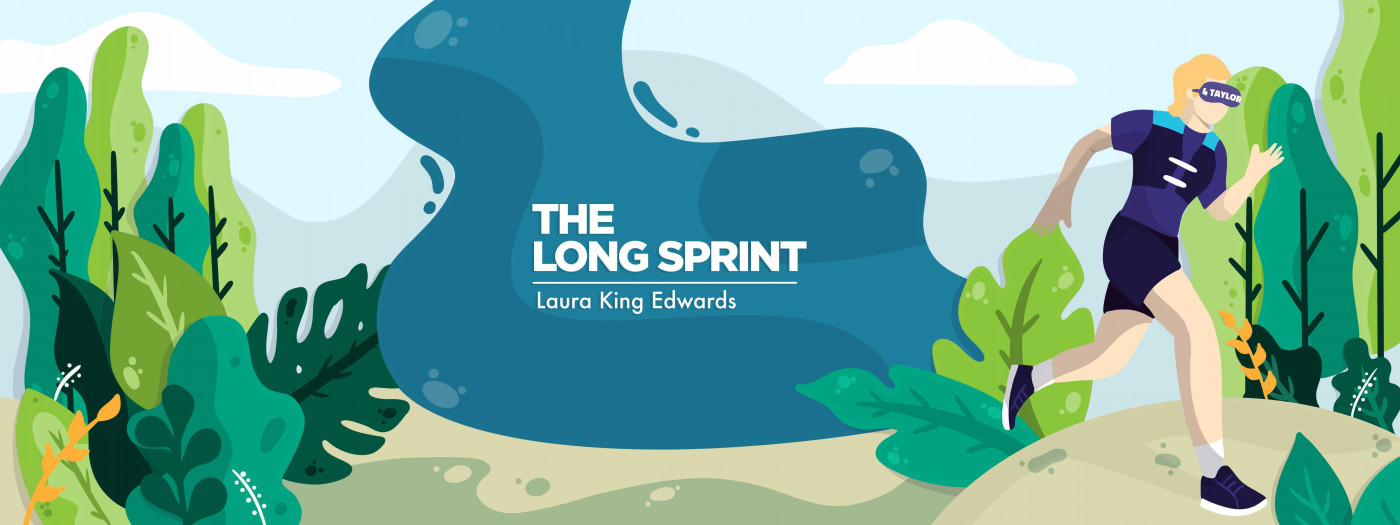Honoring my sister, who taught me how to persevere
A columnist reaches a milestone on a long road to recovery
Written by |

In January 2022, I had major surgery on my left ankle. Afterward, I spent the better part of a year relearning the simplest mechanics of walking and, later, running — the sport that saved my life when my little sister was dying from CLN1 disease (Batten disease). That’s why simply joining the field at this month’s Charlotte 10 Miler, in North Carolina, meant so much to me.
Like many children, my sister, Taylor, eventually lost her ability to walk. In fact, the day her first wheelchair arrived at my parents’ house marked one of the saddest in a long and torturous string of sad days. In the last years of Taylor’s life, I struggled to correlate the blind, mute teenager slumped in a wheelchair with the tenacious 10-year-old who ran not one, but two 5K races after losing her vision.
I’ve never known pain like my sister’s, of course. I was the lucky one: the healthy carrier who inherited a single bad copy of the recessive CLN1 gene.
A new perspective on speed
But like Taylor, I’ve had brain surgery. I’ve also struggled with migraines for most of my life. And, after 25 years of soccer and 100-plus road races, I needed a new ankle.
I had an open surgery to repair the lateral ligaments and augment them with synthetic biomaterial, plus two arthroscopic procedures to clean out the mess all those sprains left behind. I used crutches and wore a boot for what felt like an eternity. I struggled with nerve pain for months and have accepted that my second and third toes may be numb for the rest of my life. Once upon a time, I could run a five-minute mile, but seven months after the surgery, jog-walking a 10K race in Maine felt like a crowning achievement.
When I arrived at this month’s Charlotte 10 Miler, I still hadn’t run farther than 8 miles in 14 months, and I’d logged that distance only once. My parents promised to meet me at the race and asked what time I expected to cross the finish line. I said I didn’t know.
As it turns out, my legs still work. My form may be rusty, but my ankle feels stronger than it has since my days as a scrappy high school soccer player. Throughout the race, whenever my confidence wavered, I told myself that Taylor did far tougher things. I persevered. I hammered out 8:21 miles. Most of all, I finished.
The moral of this story? It’s not “I’m fast,” but simply, “I’m back.” And right now, that’s enough.
A luxury my sister didn’t have
I said I needed a new ankle and came darn close to getting one. The anchoring systems my surgeon used are the result of more than 30 years of research and development. For the first time since the late 1990s, I feel supported. Some days, I even dream about running a full marathon or an ultramarathon, distances my sports medicine doctor insisted my original ankle couldn’t withstand.
Through it all, I know the amazing medical care I received represents a luxury Taylor didn’t have.
Often, I imagine a world in which my sister never lost her ability to walk, talk, see, and swallow. I imagine a world with an approved disease-modifying therapy for CLN1 disease. I remember watching Taylor cross the finish line of her 5K races with courage and grace. And I know that, whether I’m running 10 miles or 100, I’ll keep running my race for her.
Note: Batten Disease News is strictly a news and information website about the disease. It does not provide medical advice, diagnosis, or treatment. This content is not intended to be a substitute for professional medical advice, diagnosis, or treatment. Always seek the advice of your physician or other qualified health provider with any questions you may have regarding a medical condition. Never disregard professional medical advice or delay in seeking it because of something you have read on this website. The opinions expressed in this column are not those of Batten Disease News or its parent company, Bionews, and are intended to spark discussion about issues pertaining to Batten disease.






Leave a comment
Fill in the required fields to post. Your email address will not be published.